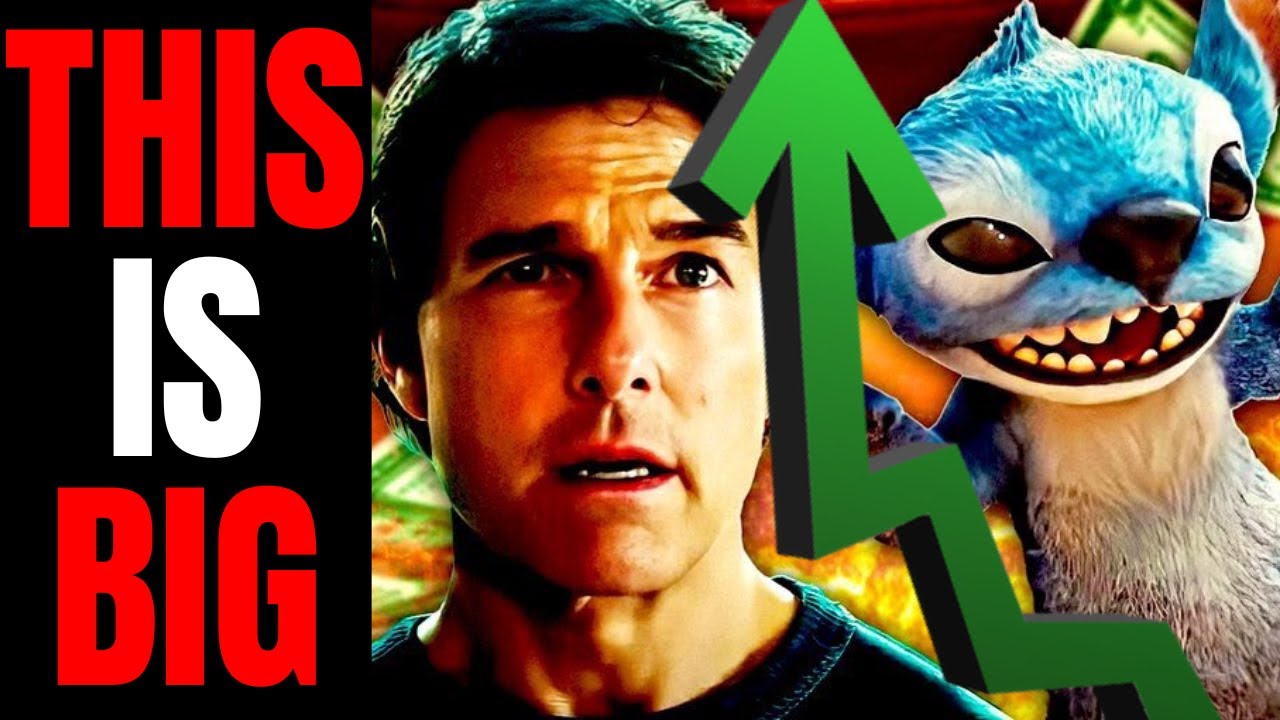The Memorial Day weekend of 2025 has etched its name in cinematic history, with Disney’s live-action Lilo & Stitch and Paramount’s Mission: Impossible – The Final Reckoning fueling the biggest box office haul ever for the holiday. Lilo & Stitch, a heartfelt remake of the 2002 animated classic, grossed a staggering $183 million domestically and $341.7 million globally over its four-day opening. Mission: Impossible – The Final Reckoning, the eighth and reportedly final chapter in Tom Cruise’s iconic spy saga, delivered a franchise-best $77 million domestically and $204 million worldwide. Both films have shattered records and drawn massive crowds, yet beneath the surface lies a stark financial reality: while one is poised to be a profitable triumph, the other risks losing money despite its box office bravado. This article dives into the explosive performances of these films, their production and marketing costs, and the factors that determine why one will thrive while the other faces a financial cliff.

Lilo & Stitch: A Nostalgic Juggernaut with Profit Potential
Lilo & Stitch, directed by Dean Fleischer Camp, reimagines the story of Lilo, a young Hawaiian girl (Maia Kealoha), who befriends Stitch, a mischievous alien (voiced by Chris Sanders). The film’s $183 million domestic opening, including a record-breaking $14.5 million in Thursday previews, surpassed projections that initially pegged it at $120–160 million. Globally, it amassed $341.7 million, making it the second-largest worldwide opening of 2025, trailing only A Minecraft Movie. The film’s success is driven by its broad appeal, tapping into nostalgia among Gen Z and Millennials who grew up with the original, as well as families drawn to its PG rating and vibrant Hawaiian setting.
The film’s financial outlook is bright, largely due to its modest $100 million production budget and an estimated $100 million in global marketing costs. With a break-even point around $250–300 million, Lilo & Stitch has already surpassed this threshold in its opening weekend. Its strong audience reception—evidenced by an “A” CinemaScore and a 94% audience score on Rotten Tomatoes—suggests robust word-of-mouth that could propel it toward $1 billion globally, rivaling Disney’s most successful live-action remakes like The Lion King ($1.6 billion) and Beauty and the Beast ($1.2 billion). The film’s cultural resonance, particularly among younger women and diverse audiences, further bolsters its longevity. Merchandise sales, a hallmark of the Lilo & Stitch brand since 2002, are also expected to contribute significantly to Disney’s bottom line, with Stitch-themed products already flooding markets worldwide.
Several factors underpin Lilo & Stitch’s box office dominance. Its shorter runtime (approximately 90 minutes) allows for more daily showtimes compared to its competitor, maximizing ticket sales. The film played in 4,410 theaters domestically, 553 more than Mission: Impossible, giving it a wider reach. Its release timing, coinciding with the start of summer and school closures, capitalized on family audiences, while its nostalgic pull drew adults without children—60% of ticket buyers were non-parents, a rarity for a family film. Internationally, the film excelled in markets like Mexico ($23.7 million), the UK ($12.9 million), and Brazil ($11.1 million), setting opening-day records in several territories. Disney’s decision to shift the film from a planned Disney+ release to a theatrical one proved prescient, as its box office performance underscores the enduring theatrical appeal of its IP.
Mission: Impossible – The Final Reckoning: A High-Octane Gamble with a Hefty Price Tag
Mission: Impossible – The Final Reckoning, directed by Christopher McQuarrie and starring Tom Cruise as Ethan Hunt, marks the culmination of a nearly 30-year franchise. Its $77 million domestic opening over four days, including $8.3 million in previews, set a franchise record, surpassing Mission: Impossible – Fallout’s $61 million debut. Globally, the film grossed $204 million, with $127 million from 64 international markets, outperforming its predecessor Dead Reckoning by 7% in like-for-like markets. The film’s high-octane stunts, premium IMAX screenings, and Cruise’s relentless promotion—including a splashy Cannes premiere—drove its appeal among older audiences and action fans, earning it an 80% Rotten Tomatoes critics score and five-star PostTrak ratings.
Despite its impressive numbers, Mission: Impossible faces a daunting financial hurdle: its colossal $400 million production budget, one of the highest in film history. This figure, inflated by pandemic-related delays, Hollywood strikes, and rising costs, does not include an estimated $100–150 million in global prints and advertising (P&A). With a break-even point likely exceeding $800–900 million, the film’s $204 million opening, while strong, falls short of the runway needed to guarantee profitability. For context, Mission: Impossible – Fallout grossed $791 million worldwide, and Dead Reckoning earned $567 million, neither of which approached the $900 million mark. Even with a projected 3.5x multiple on its opening weekend, The Final Reckoning may struggle to reach $700–800 million globally, leaving Paramount and co-financiers Skydance and New Republic facing potential losses.
The film’s challenges are compounded by its runtime and market dynamics. At 2 hours and 49 minutes—the longest in the franchise—it limits daily showtimes, reducing ticket sales compared to Lilo & Stitch. Its 3,857 domestic theaters, while substantial, are fewer than its competitor’s, and its PG-13 rating narrows its audience compared to the family-friendly Lilo & Stitch. Internationally, the film performed well in markets like Korea ($12.7 million) and Japan ($11 million), but its delayed release in China (May 30) and competition from family films during the summer season could cap its overseas earnings. While IMAX and premium formats, secured for three weeks, enhance its theatrical experience, they may not be enough to offset the film’s staggering costs.
Why One Wins and the Other Loses
The financial fates of Lilo & Stitch and Mission: Impossible – The Final Reckoning hinge on their production economics and market positioning. Lilo & Stitch’s lean $100 million budget, combined with its broad demographic appeal and merchandising potential, positions it as a slam-dunk for Disney. Its global opening alone covered its costs, and its trajectory suggests it could join the billion-dollar club, cementing Disney’s dominance in live-action remakes. The film’s ability to attract both nostalgic adults and young families, coupled with its efficient runtime and wide theatrical footprint, ensures sustained box office momentum.
Mission: Impossible, however, is a victim of its own ambition. Its $400 million budget, driven by Cruise’s commitment to practical stunts and premium production values, sets an almost unattainable bar for profitability. While its franchise-best opening reflects Cruise’s enduring star power and the series’ loyal fanbase, the film’s financial viability depends on exceptional legs—something its predecessor Dead Reckoning lacked. The film’s older-skewing audience and longer runtime limit its scalability compared to Lilo & Stitch, and its high costs leave little room for error. Even if it outperforms expectations, reaching $800 million globally, it may still fall short of breaking even, especially with profit-sharing agreements among co-financiers.
The Bigger Picture: Lessons for Hollywood
The contrasting fortunes of these films offer critical insights for the film industry. Lilo & Stitch demonstrates the power of leveraging nostalgic IP with cost-effective production and broad appeal. Disney’s decision to pivot from streaming to theatrical release highlights the enduring value of the big screen for the right projects. The film’s success also underscores the importance of diverse casting and culturally resonant stories, as its Hawaiian setting and young lead resonate with global audiences.
Mission: Impossible’s struggles, despite its box office strength, expose the risks of unchecked budgets in an era of tightening theatrical windows. The film’s reliance on premium formats and star-driven marketing, while effective, cannot fully mitigate its financial burden. Paramount’s gamble on a high-stakes finale reflects the franchise’s legacy but also the challenges of sustaining long-running series in a competitive market. The industry must balance spectacle with fiscal discipline to ensure theatrical releases remain viable.
Conclusion: A Tale of Triumph and Caution
The Memorial Day 2025 box office, projected at $325–350 million domestically, marks a triumphant rebound from 2024’s dismal holiday frame. Lilo & Stitch and Mission: Impossible – The Final Reckoning have driven this surge, with the former rewriting records and the latter cementing Tom Cruise’s legacy. Yet, while Lilo & Stitch is poised to be a financial and cultural milestone, Mission: Impossible’s exorbitant costs cast a shadow over its success. As Hollywood navigates a post-pandemic landscape, these films highlight the delicate balance between ambition and pragmatism. For now, Stitch’s galactic victory overshadows Ethan Hunt’s daring mission—but both remind us why the movies remain a cultural force.





